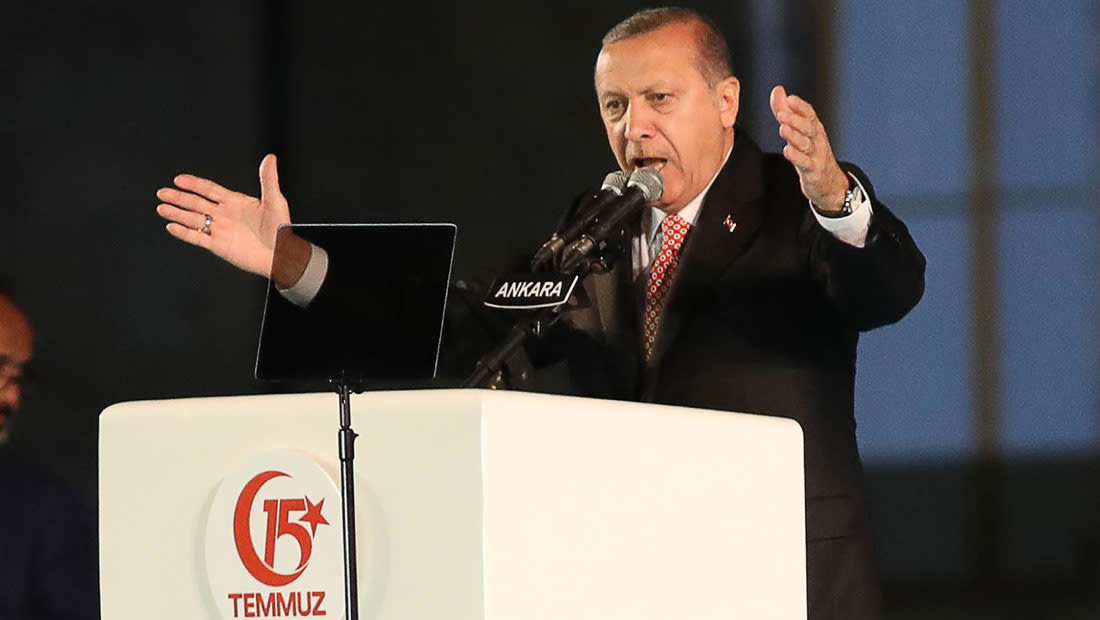هذا المقال بقلم کاملیا انتخابی فرد، والآراء الواردة أدناه تعبر عن رأي الكاتبة، ولا تعكس بالضرورة وجهة نظر شبكة CNN.
فوجئ مستخدمو الهواتف النقالة في تركيا باستلام رسالة صوتية من الرئيس التركي رجب طيب اردوغان يوم السبت 15 يوليو، والذي صادف مرور عام على محاولة الانقلاب الفاشلة التي وقعت في 15 يوليو، 2016. بعد الاتصال برقم معين، كان بإمكان المستخدمين سماع رسالة تهنئة من الرئيس اردوغان على الإجازة الوطنية بمناسبة "الديمقراطية والوحدة" التي جاءت بمناسبة فشل الانقلاب.
تركيا تمر بفترة انتقالية هامة حالياً من حيث موقعها وصورتها في العالم، وكذلك على الصعيد الداخلي. في عشرينيات وثلاثينيات القرن العشرين، أراد مصطفى كمال اتاتورك أن تأخذ تركيا موقعها بين القوى الرئيسية في العالم في ذلك الوقت، لكنه لم يكن ليبرالياً أو فاشياً: هو ببساطة أسّس دولة أرادها أن تكون عصرية. هذا كان معناه أن تكون تركيا جزءاً من "الحضارة المعاصرة."
النظام الذي أسّسة أتاتورك لم يكن ديمقراطياً بأي شكل من الأشكال. كان يعتقد أن تركيا تواجه خطرين أساسيين: الخطر الأول هو التيار الديني التقليدي، ولمواجهة ذلك الخطر أسّس أتاتورك نظاماً علمانياً مطلقاً ولم يسمح بأي مظهر من مظاهر التدين في الأماكن العامة. الخطر الثاني كان الأكراد والثورات التي كانوا يقومون بها. هذان هما الخطران اللذان أراد اتاتورك أن يحمي تركيا منهما.
النظام الذي أوجده كان نظاماً شموليا بامتياز. وحتى بعد أن اصبح أكثر تعددية في خمسينيات القرن العشرين، حافظ النظام على هذه القشرة الشمولية المتخلفة. كانت المؤسسة العسكرية هي التي تضمن أن تتبع الحكومات التركية المتعاقبة تعاليم أتاتورك.
حدث أول انقلاب في الستينيات، ثم في 1971، 1980، ومن ثم في 1997. كانت تلك أربع انقلابات ناجحة في تاريخ تركيا الحديث، وفي كل مرة حدث الانقلاب لأن المؤسسة العسكرية شعرت أن السياسيين ابتعدوا أكثر من اللازم عن خط أتاتورك. الأمر اللافت أنه في كل مرة كان الجيش يتدخل فيها، كان الشعب يرد بشكل سلبي بشكل واضح.
في تركيا الحالية، وفي غياب معارضة حقيقية تحاسب اردوغان، فإن المؤسسة الوحيدة التي يخشاها الرئيس التركي هي المؤسسة العسكرية. ومع فشل الانقلاب العسكري، نستطيع أن نرى بداية تغيير في سلوك اردوغان. من المفارقة أنه كان هناك مصدر آخر للمعارضة يتمثل في منظمة فتح الله جولن. عندما ننظر إلى أساس الحركة التي جاء منها اردوغان، نجد أنها كانت حركة إسلامية متشددة لم تكن تشارك في حكم الدولة. عندما جاء اردوغان إلى الحكم، لم يكن لديه ما يكفي من الأشخاص لوضعهم في مناصب معينة ولذلك تحالف مع جولن.
بنى جولن نظاماً دينياً وتغلغلت منظمته في النظام التعليمي التركي. أتباع جولن، رغم إيمانهم بفكر إسلامي محدد، كانوا متعلمين نسبياً. وعندما وصل اردوغان إلى السلطة، اعتمد على أشخاص من حركة جولن في كثير من المناصب الحكومية. لكنه انقلب على جولن فيما بعد واتهمه بالتآمر عليه، وبذلك أعطى لنفسه الضوء الأخضر للتخلص من جميع المسؤولين والموظفين الموالين لجولن.
من الواضح أن الرئيس اردوغان استغل الانقلاب الفاشل بشكل فعال للتخلص من جميع معارضيه المحتملين، وهذه ليست سوى البداية. يستطيع اردوغان أن يحكم فترتين رئاسيتين فقط، مدة كل منهما 5 سنوات. الفترة الرئاسية الحالية غير محسوبة، وسيبدأ الحساب من عام 2019 الذي سيمثل أول انتخاب وفق الدستور الجديد، وبعد ذلك يستطيع البقاء –إذا فاز في الانتخابات- حتى عام 2029، حيث سيكون وصل عمره إلى 76 عاماً.
ربما على الأتراك أن يستعدوا لسماع الكثير من الرسائل الصوتية على جوالاتهم خلال السنوات القادمة.

